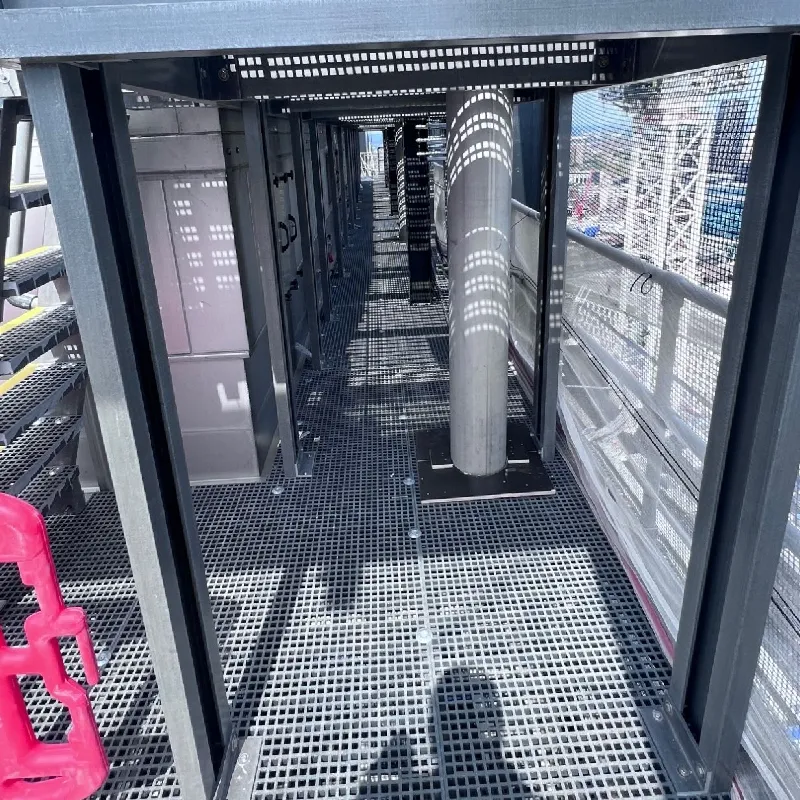loading...
- No. 9, Xingyuan South Street, Dongwaihuan Road, Zaoqiang County, Hengshui, Hebei, China
- admin@zjcomposites.com
- +86 15097380338
- Welcome to visit our website!
FRP Angle Bar - Lightweight, Durable & Corrosion-Resistant Solutions
Understanding FRP Angle Bars Properties, Applications, and Benefits
Fiber Reinforced Polymer (FRP) angle bars have emerged as a revolutionary solution in various fields of construction and engineering. Composed of a polymer matrix reinforced with fibers, these angle bars exhibit remarkable physical and mechanical properties that make them a preferred choice over traditional materials such as steel and aluminum.
Understanding FRP Angle Bars Properties, Applications, and Benefits
Moreover, FRP angle bars are resistant to corrosion, making them an ideal choice for applications in hostile environments, such as chemical plants, coastal areas, and wastewater treatment facilities. Traditional metals are prone to rust and degradation over time, which can lead to costly repairs and replacements. In contrast, the durability of FRP ensures longevity and reliability, leading to lower lifecycle costs.
frp angle bar

The mechanical strength of FRP angle bars is also noteworthy. Their high tensile strength and stiffness make them suitable for load-bearing applications, providing excellent structural integrity. Furthermore, they possess an exceptional resistance to fatigue, which is essential in structures subjected to dynamic loads. This property contributes to the safety and stability of constructions over time.
Beyond durability and strength, FRP angle bars offer flexibility in design. Manufacturers can customize the dimensions, colors, and finishes to meet specific project needs. This adaptability allows architects and engineers to explore innovative designs while adhering to aesthetic and functional requirements.
The environmental impact of using FRP angle bars is also a significant consideration. These materials can be produced with environmentally friendly processes and are often made from recycled fibers. As sustainability becomes increasingly important in construction, FRP offers an appealing alternative to traditional materials.
In conclusion, FRP angle bars represent a modern solution that combines strength, durability, and lightweight properties with corrosion resistance. Their versatility makes them suitable for various applications, from industrial to commercial constructions. As the construction industry continues to evolve, the adoption of FRP materials signifies a shift towards more sustainable and efficient building practices. By understanding the advantages of FRP angle bars, engineers and architects can make informed decisions that enhance the quality and longevity of their projects.
-
GRP Structures: The Future of Lightweight, High-Performance EngineeringNewsJun.20,2025
-
FRP Water Tank: High-Performance Storage for Corrosive and Clean Water SystemsNewsJun.20,2025
-
FRP Square Tube: The New Industry Standard for Chemical and Structural ApplicationsNewsJun.20,2025
-
FRP Pultruded Profiles: The Ultimate Choice for Lightweight Structural StrengthNewsJun.20,2025
-
FRP Handrails: The Safer, Smarter, and Stronger Choice for Modern InfrastructureNewsJun.20,2025
-
FRP Grating: The Smart Solution for Durable, Lightweight Industrial FlooringNewsJun.20,2025
-
Why Choose a Galvanized Water Tank for Your Storage NeedsNewsMay.21,2025
